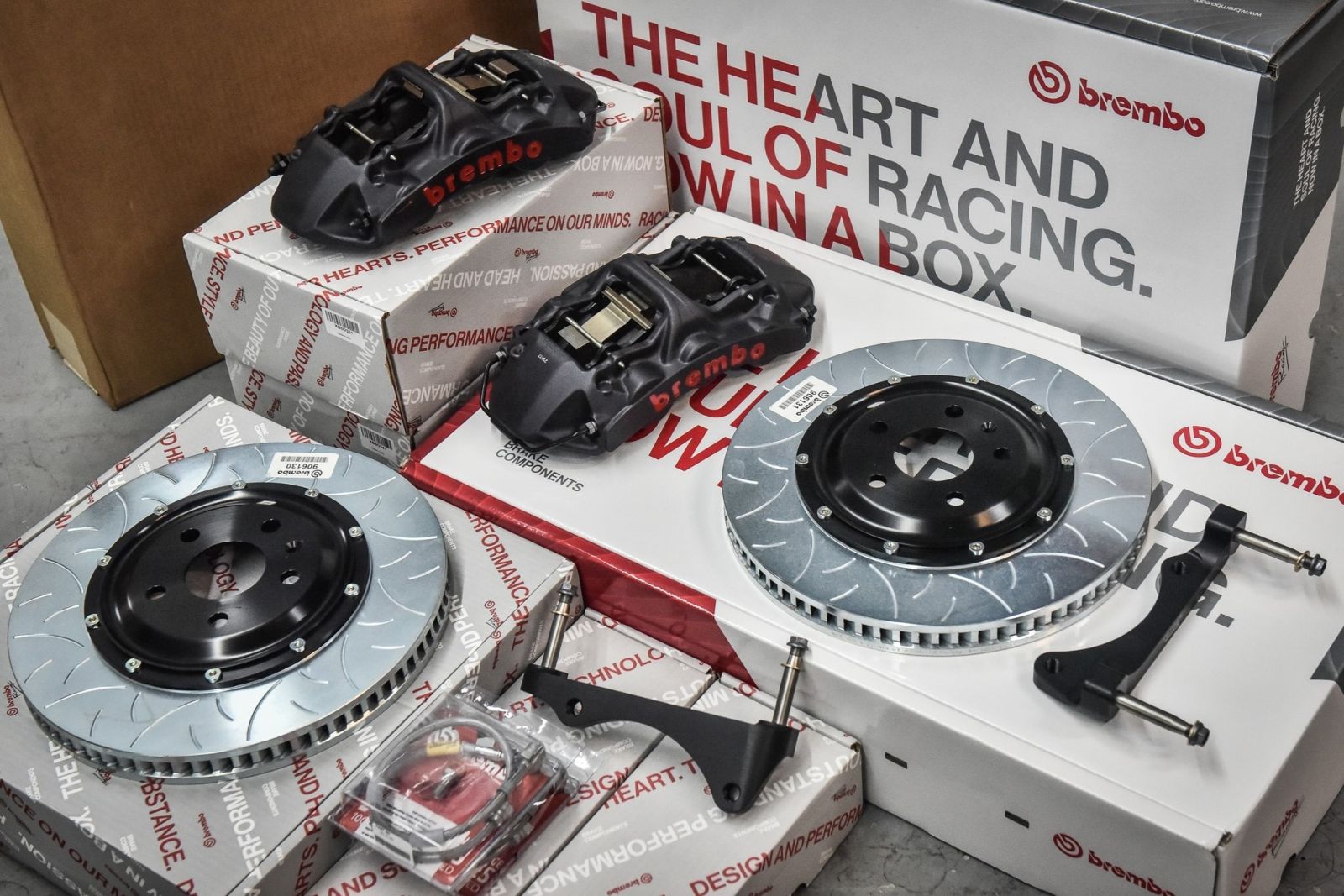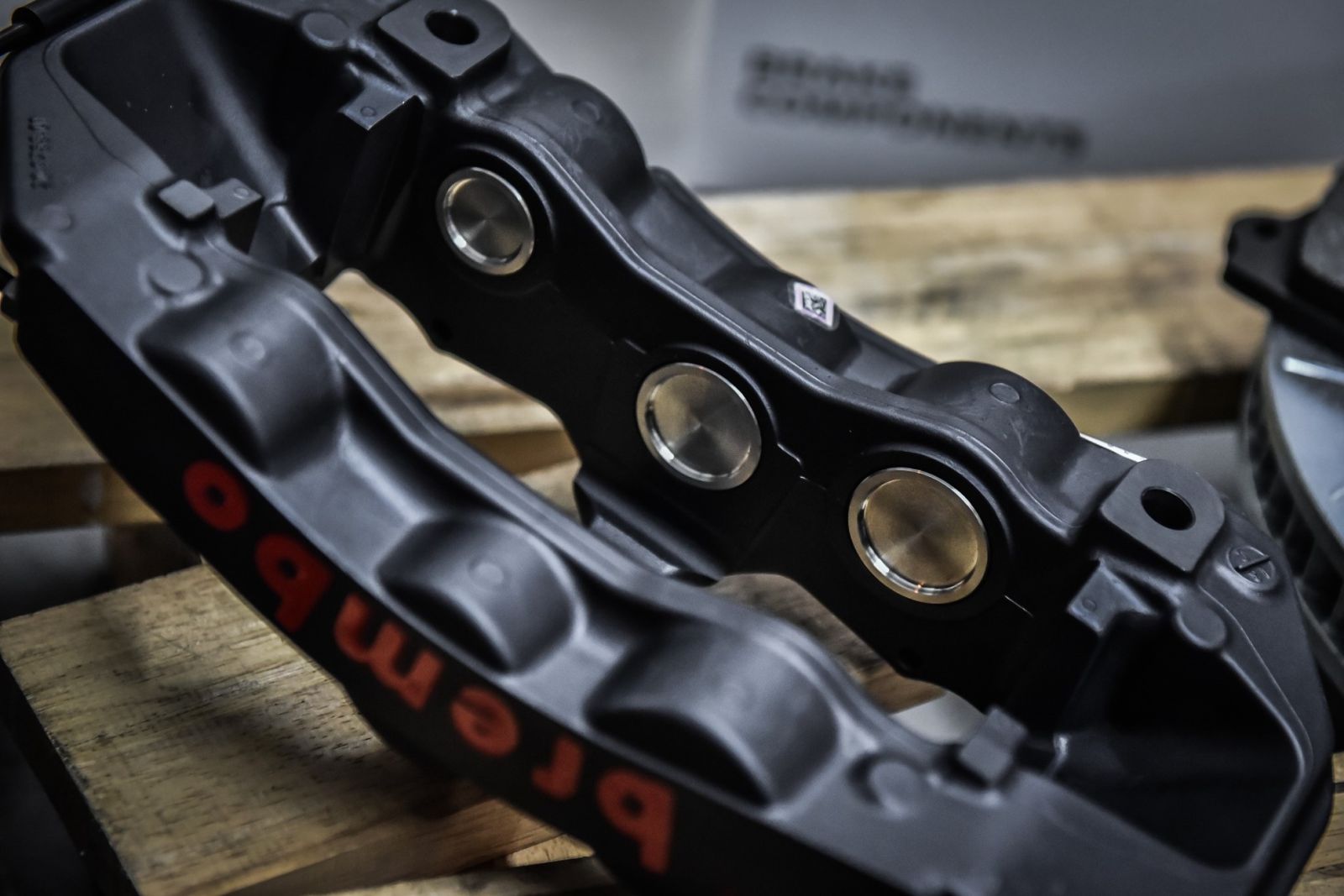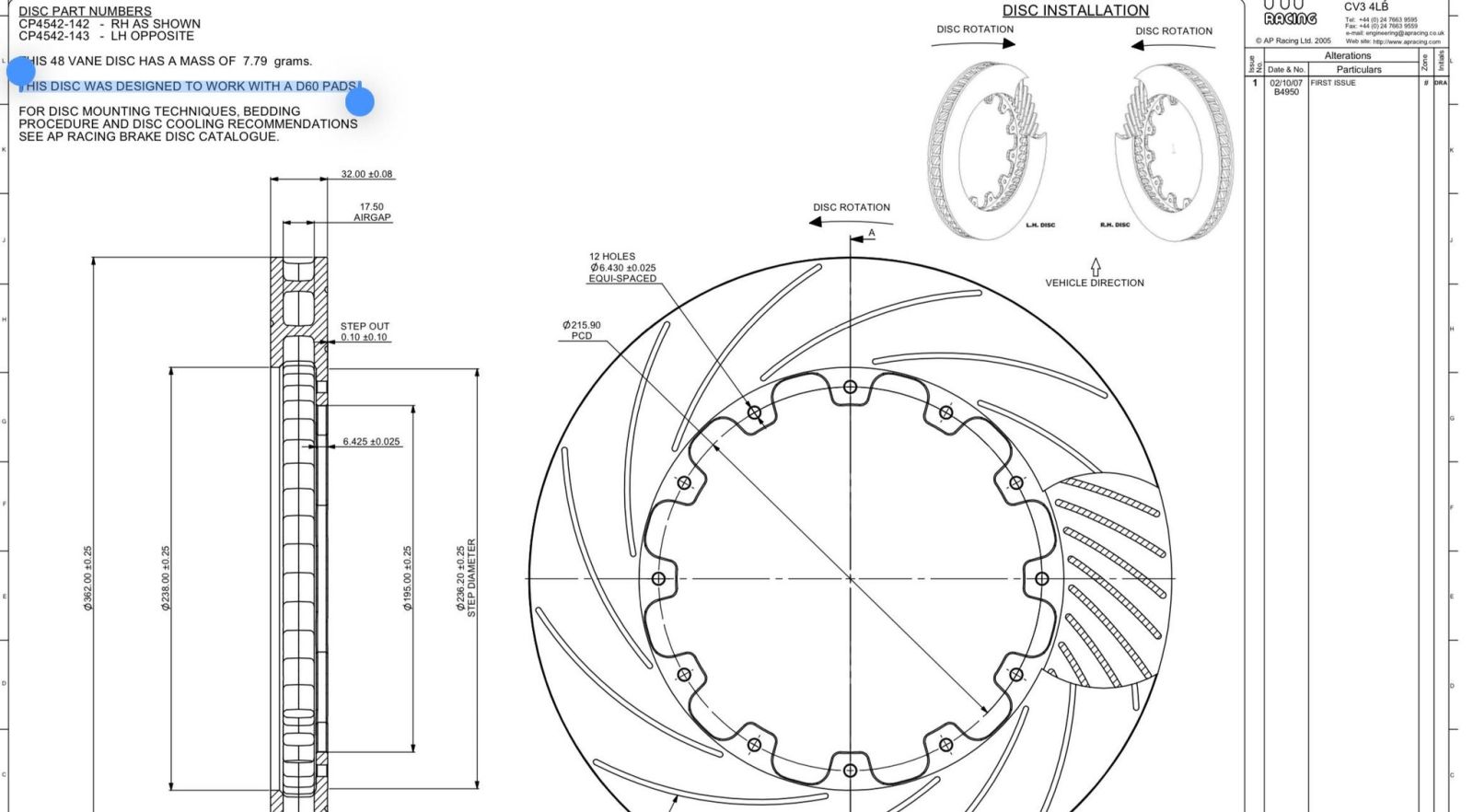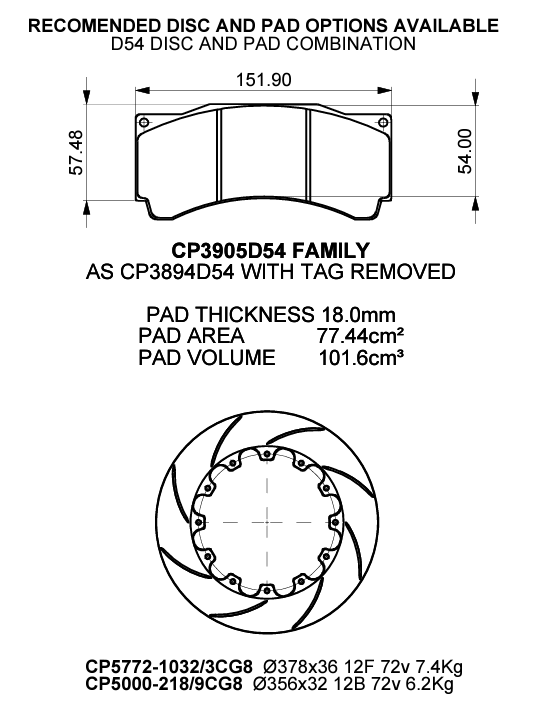Brake Systems | Don't Get Scammed
Brake Systems vs Big Brake Kits
In this article we dive into the fundamental differences between various brake kits found on the market today, but first we'd like to create some background and context.
The scenario we're most commonly presented with goes something like this:
-
You take your street car on track and by the 3rd lap your brake pedal has become a sponge. Consequently, the car no longer pulls up.
-
You ask "what brake pads and discs does everybody recommend?" in your Facebook Group of choice.
-
You purchase the recommendation from 30 members who have never driven their car on a circuit before, have them fitted and fluid bled.
-
Back at the track and once again, your brake pedal sinks to the floor, but not before setting the dust seals in your calipers on fire and seizing a piston.
- You explain what happened to your Facebook friends, and they tell you you're a race car driver and your 300hp VW Golf needs a big brake kit.
- You switch tabs to Google, search "Golf R brake kit" and instantly presented with options varying from $3000 to $9000.
- You purchase the $3000 kit because the calipers are branded the same as the $9000 system and even offers a larger disc diameter.
- Back at the track and this time, your car stops and you no longer experience brake fade. The system is so strong in fact, that you trigger the ABS just by breathing on the pedal and soon realise that you're due for new pads and discs after your second track day.
Have you or somebody you know shared a similar experience? Unfortunately, misleading product listings and intentionally vague descriptions are designed to sell you a product which does not perform as intended and in some cases, simply dangerous. In this article, we shall differentiate the various packages and why a $9000 brake system can exist in such a competitive market if the $3000 brake kit could perform to a satisfactory standard?
It is important to note firstly, that Brembo is the only brake manufacturer in the world that designs and produces engineered, vehicle specific systems so for the sake of consistency, we will use Brembo's GT, GT-S and PISTA Systems as the baseline for reference and comparison.
What is a vehicle specific system? Aren't all brake kits vehicle specific?
This is where we refer back to misleading product listings and intentionally vague descriptions. An example of a similar situation would be if you are shopping for wheels and you come across a set of RAYS TE37 wheels to suit your car, listed for $6000. We all know RAYS and we're all somewhat familiar with their quality, forging process, load rating and structural strength. On another tab there is wheel brand claiming the same quality and manufacturing process but priced at $2500 for the set. Do you question the legitimacy of this product or do you grab yourself a bargain based on the seller's promise that they are?
With varying degrees of severity, the same issues apply to big brake kits on the market. We won't go into counterfiet components as we haven't found it to be much of an issue in Australia compared to the Asian market.
OEM brake systems are designed with specific paramaters which take a whole range of factors such as overall brake torque, friction compounds, ABS operation, fluid capacity and tyre grip into account for its intended use - street use. Whilst replacing higher performance pads, discs and fluid are a big improvement over the OEM setup, the system is simply not designed or intended to be used for race purposes. Earlier we mentioned that Brembo is the only brake manufacturer that designs vehicle systems in-house. This does not mean that Brembo produces the only brake systems that work. There are companies such as Essex Parts that design extremely high quality and functional AP Racing vehicle systems, certified by AP Racing.
Unfortunately, there is little to no control of random factories with access to a CNC machine purchasing bulk quantities of the same calipers used by official brand partners and using them to manufacture kits to suit a massive range of vehicles. This is the first point of cost savings during purchasing and manufacturing.
Below, you will be able to see how a Brembo GTS System is delivered compared to a kit assembled with AP Racing CP9660 calipers.
Below: Brembo GTS 6 Piston System
Below: Brake kit with AP Racing 6 piston calipers and flexibility of choosing your desired disc size, even if it's not within the CP9660's designed specification range.
The brake kit pictured above is assembled using the exact same caliper and 3 disc size variations, regardless of the vehicle application. There is no consideration for compatibility with the vehicle's ABS system, brake bias or master cylinder sizing so only the mounting components are changed to suit different vehicles. Quite often we see even basic fitting locations have been designed incorrectly, with pads overhanging the disc face, disc not centered in the caliper or incorrect disc annulus and pad depths which all contribute to decreased performance, increased heat generation and irregular wear.
Correctly designed systems however, have calculated piston areas and orientation to simulate OE operation. Although every Brembo GT/GTS 6 piston caliper looks identical from the outside, there are actually countless caliper part numbers all with different variations of piston sizing and location to suit the specific vehicle they were engineered for.
Just because it bolts on, doesn't mean it fits!
A recent case where a track enthusiast was supplied an AP Racing CP9660 brake system and CP4542-142/143 (362x32mm) discs. He reached out complaining of severe pad tapering and other brake performance issues. The CP9660 is a great caliper and his choice of pad compound in theory would have been sufficient for his driving style and duration. Upon further investigation, we noted that the discs supplied in the kit has an annulus to suit a pad depth of D61 and the CP9660 caliper is designed to accept a D54 pad. Whilst the kit bolted up, the incorrectly matched pad meant a large portion of the discs' surface area was unused and the different curve angles between the pads and discs generate excessive heat causing accelerated/irregular wear.





